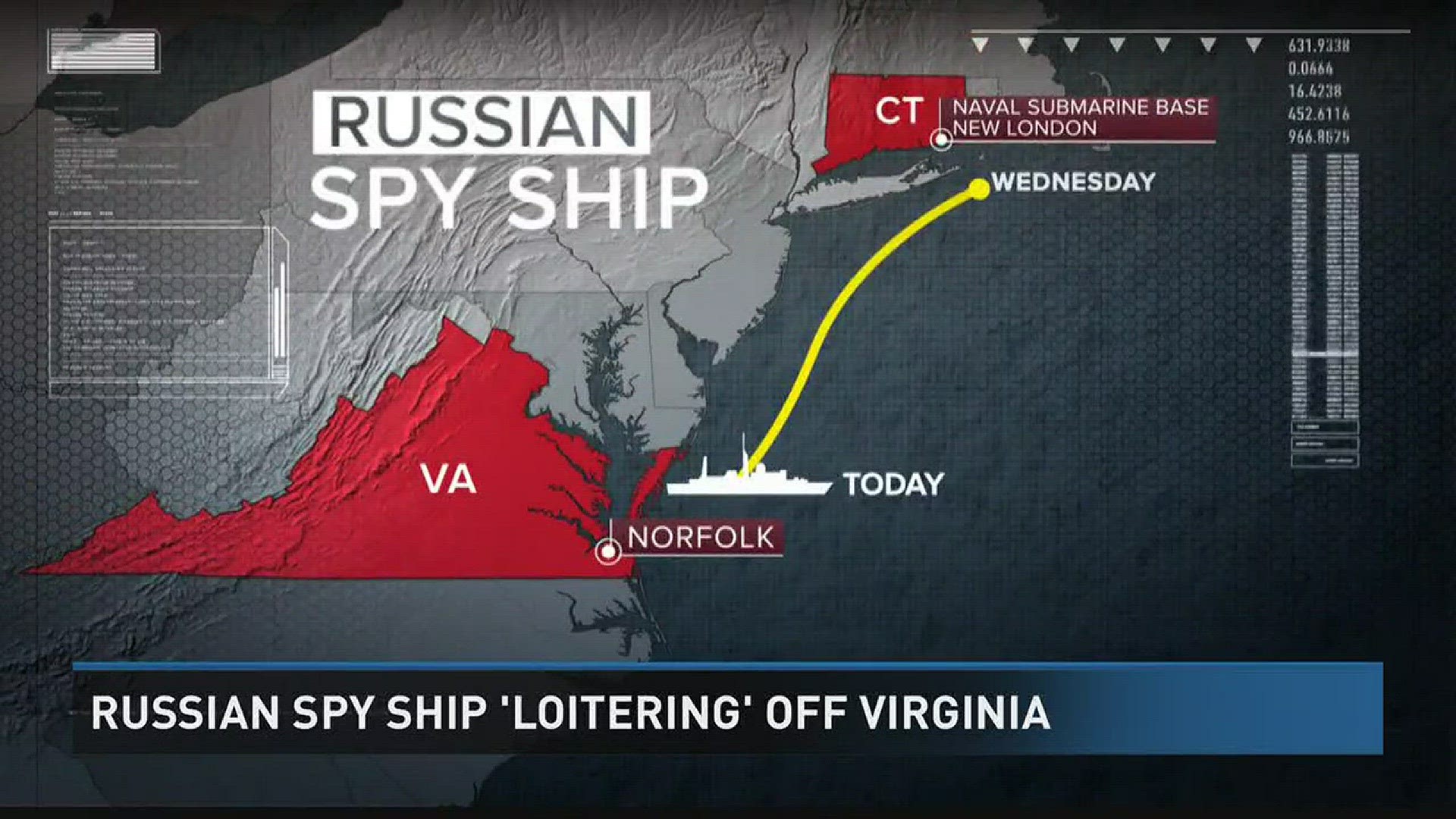NORFOLK, Va. (ABC/WVEC) -- The Russian spy ship Viktor Leonov is no longer off the coast of Connecticut, but has moved southward to a position northeast of Norfolk, Virginia.
That, of course, is home to the world's largest naval base, Naval Station Norfolk, and the Navy's East Coast master jet base, Naval Air Station Oceana.
Hampton Roads is also home to Newport News Shipbuilding, the world's only maker of nuclear-powered aircraft carriers, including the Gerald R. Ford, which is set to go to sea for the first time in the near future.
In a statement to 13News Now, the Defense Department said, "We are aware of the vessel's presence. It has not entered U.S. territorial waters," said Lt. Col. Valerie Henderson. "We respect freedom of navigation exercised by all nations beyond the territorial sea of a coastal State consistent with international law."
Enemy vessels off the U.S. East Coast are nothing new.
During World War II, German U-boats sank 233 American cargo ships in the Atlantic and in the Gulf of Mexico, killing 5,000 seamen and passengers.
But Virginia Second District Congressman Scott Taylor, a former Navy SEAL, says this is different, that this Russian ship does not present much of a threat.
"This particular ship, the technology is old and outdated," said Taylor, a Republican. "It actually shows Russian weakness. They're way behind. I think that ship is only able to intercept things ship-to-ship, and ship-to-coast, and radio communications."
The vessel's presence 30 miles south of a U.S. Navy submarine base in New London, Connecticut drew international headlines this week even though U.S. officials were not concerned by the ship's operations, which are in international waters.
On Tuesday, the Russian spy ship had positioned itself east of Long Island, about 30 miles south of the New London submarine base.
Officials said the vessel was "loitering" in the area, presumably gathering intelligence about U.S. Navy submarine operations, similar to what it did in 2014 and 2015 when it stayed for several weeks at a time close to the other U.S. Navy submarine base at Kings Bay, Georgia.
But a U.S. official said the Leonov only spent about 24 hours in the waters off of Connecticut before it began moving south some time on Wednesday. By Thursday morning, the ship was 75 miles northeast of Norfolk.
Throughout its transit up and down the Eastern seaboard this week, the Leonov has remained in international waters, well beyond U.S. territorial waters, which extend 12 miles from shore.
American officials have downplayed the presence of the Russian ship off the East Coast, noting that it has been operating in international waters and conducting missions that were common during the Cold War.
Equipped with communications gathering equipment, the Viktor Leonov is able to track the activity and movements of the U.S. Navy's submarine fleet.
At a White House news conference Thursday, President Donald Trump referenced the ship's presence off of Connecticut as "not good."
Trump said he recently told Secretary of State Rex Tillerson that "the greatest thing I could do is shoot that ship that's 30 miles off shore right out of the water," but that it would not be a great move for improving relations with Russia.
In 2014 and 2015, the Leonov spent weeks in international waters close to the submarine base at Kings Bay. This week's trip to the waters off of Connecticut was the first time the intelligence-gathering ship had visited the area close to the submarine base at New London.
One official speculated the Leonov was not able to gather a good amount of intelligence given the brief amount of time it spent off of Connecticut and the public exposure its visit received.
It is unclear where the spy ship could be headed. Its current path will likely take it past Kings Bay, Georgia, where it had briefly stopped on its way north. Or it could head to Havana, Cuba where it made ports of call in 2014 and 2015.
The Leonov has been involved in three of the four Russian spy ship visits to the East Coast since 2014, when the Russian Navy resumed a practice that was common throughout the Cold War.

